Abstract
Halobacterium halobium is attracted by green and red light and repelled by blue-green and shorter wavelength light. a photochromic, rhodopsin-like protein in the cell membrane, sensory rhodopsin sR587, has been identified as the receptor for the long-wavelength and near-UV stimuli. Discrepancies between the action spectrum for the repellent effect of blue light and the absorption spectrum of sR587 and its photocycle intermediate S373 strongly suggest the existence of an additional photoreceptor for the blue region of the spectrum. Transient light-induced absorbance changes in intact cells and cell membranes show, in addition to sR587, the presence of a second photoactive pigment with maximal absorption near 480 nm. It undergoes a cyclic photoreaction with a half-time of 150 msec. One intermediate state with maximal absorption near 360 nm has been resolved. The spectral properties of the new pigment are consistent with a function as the postulated photoreceptor for the repellent effect of blue light. The phototactic reactions and both pigments are absent when retinal synthesis is blocked; both can be restored by the addition of retinal. These results confirm and extend similar observations by Takahashi et al. [Takahashi, T., Tomioka, H., Kamo, N. & Kobatake, Y. (1985) FEMS Microbiol. Lett. 28, 161-164]. The archaeobacterium H. halobium thus uses two different mechanisms for color discrimination; it uses two rhodopsin-like receptors with different spectral sensitivities and also the photochromicity of at least one of these receptors to distinguish between three regions covering the visible and near-UV spectrum.
Full text
PDF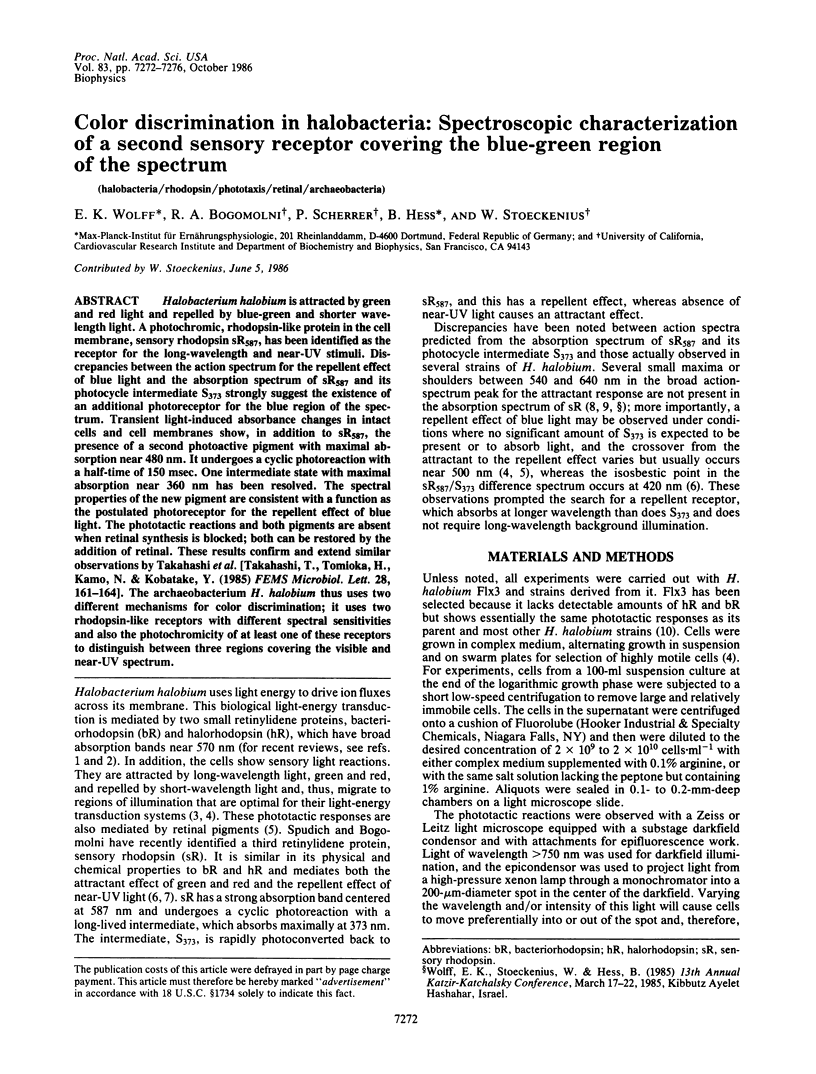
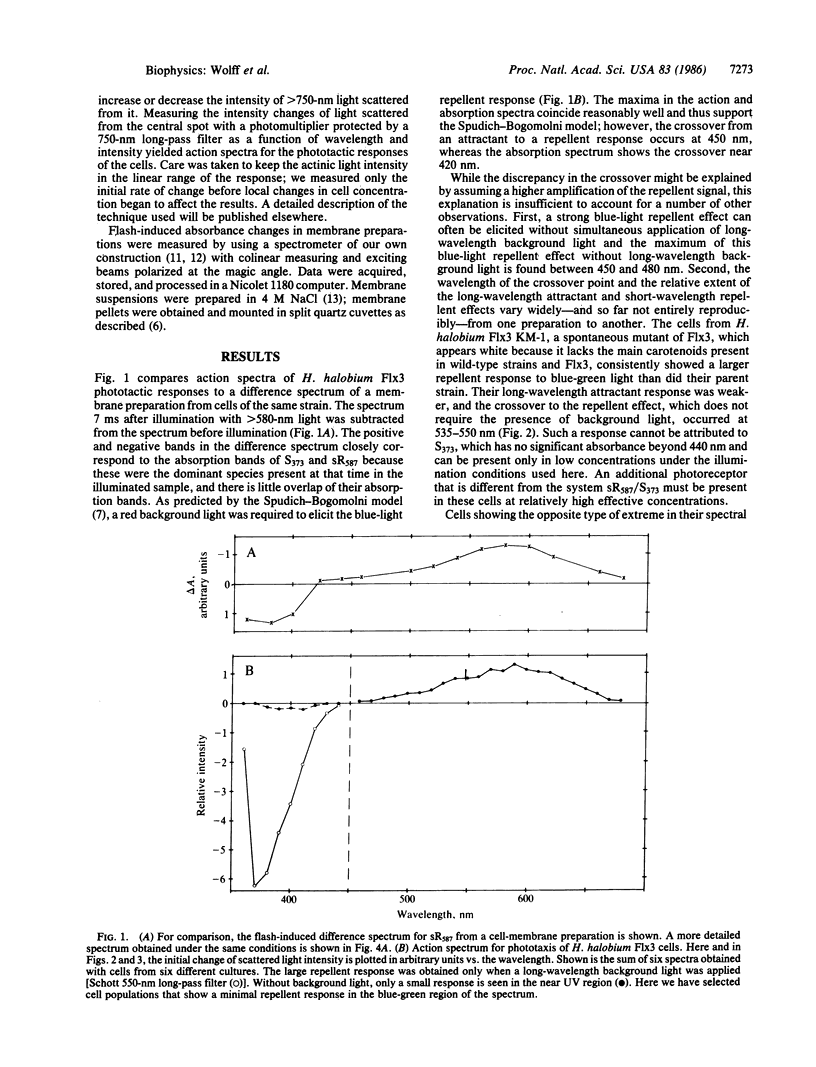
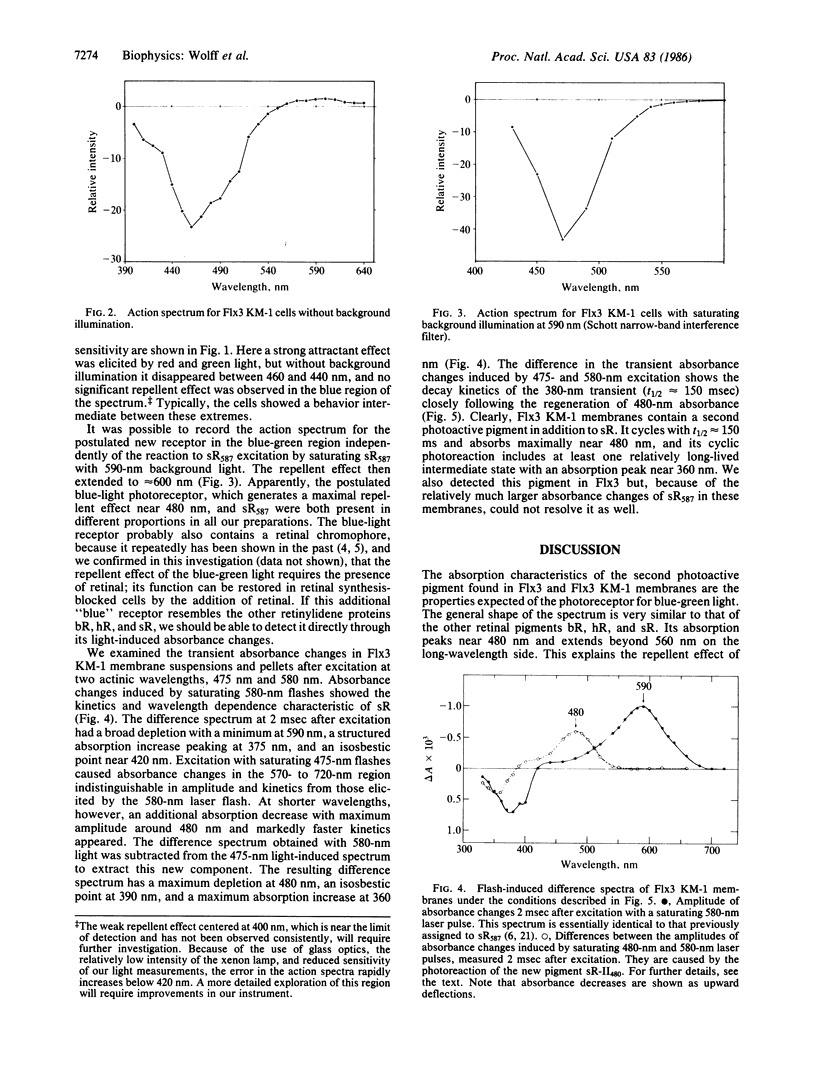
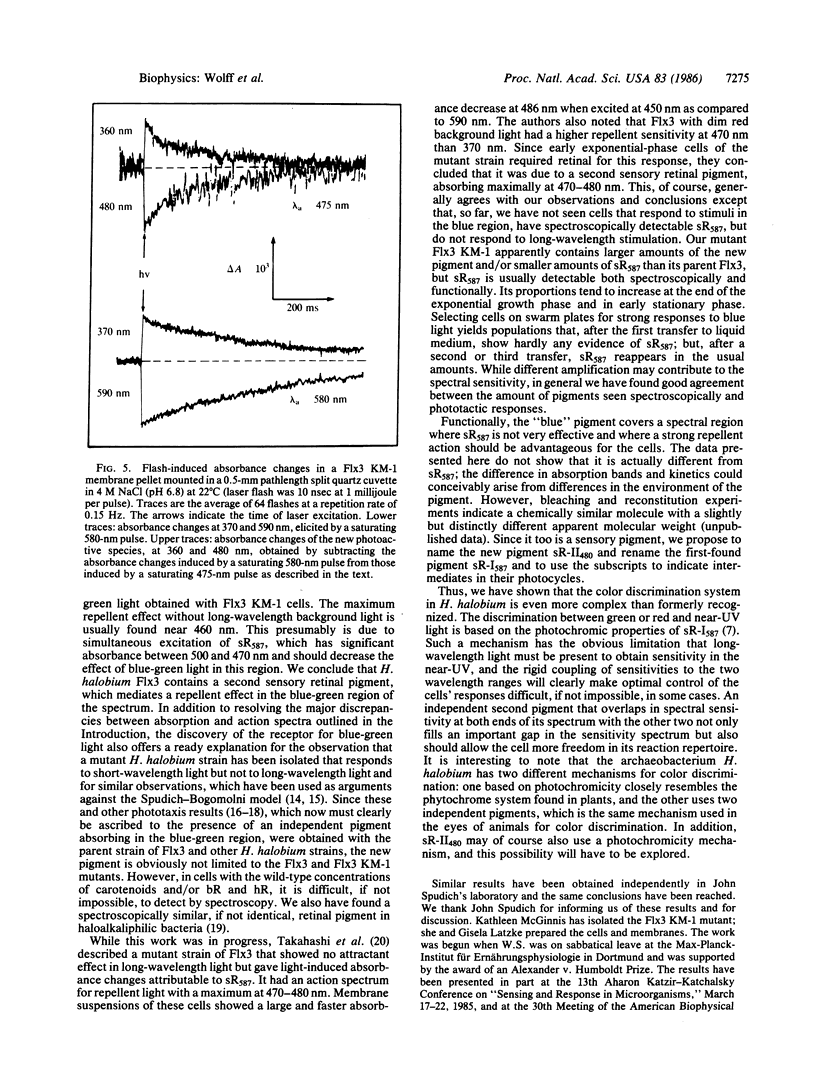
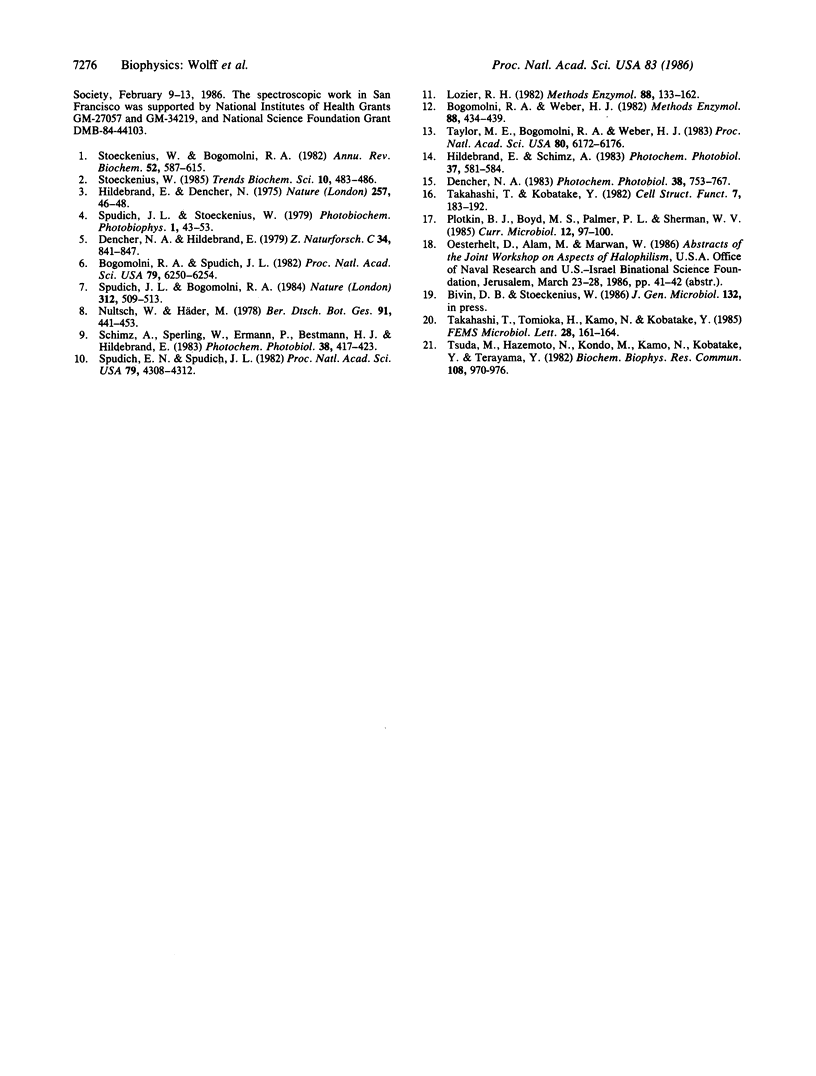
Selected References
These references are in PubMed. This may not be the complete list of references from this article.
- Bogomolni R. A., Spudich J. L. Identification of a third rhodopsin-like pigment in phototactic Halobacterium halobium. Proc Natl Acad Sci U S A. 1982 Oct;79(20):6250–6254. doi: 10.1073/pnas.79.20.6250. [DOI] [PMC free article] [PubMed] [Google Scholar]
- Dencher N. A., Hildebrand E. Sensory transduction in Halobacterium halobium: retinal protein pigment controls UV-induced behavioral response. Z Naturforsch C. 1979 Sep-Oct;34(9-10):841–847. doi: 10.1515/znc-1979-9-1030. [DOI] [PubMed] [Google Scholar]
- Hildebrand E., Dencher N. Two photosystems controlling behavioural responses of Halobacterium halobium. Nature. 1975 Sep 4;257(5521):46–48. doi: 10.1038/257046a0. [DOI] [PubMed] [Google Scholar]
- Spudich E. N., Spudich J. L. Control of transmembrane ion fluxes to select halorhodopsin-deficient and other energy-transduction mutants of Halobacterium halobium. Proc Natl Acad Sci U S A. 1982 Jul;79(14):4308–4312. doi: 10.1073/pnas.79.14.4308. [DOI] [PMC free article] [PubMed] [Google Scholar]
- Spudich J. L., Bogomolni R. A. Mechanism of colour discrimination by a bacterial sensory rhodopsin. Nature. 1984 Dec 6;312(5994):509–513. doi: 10.1038/312509a0. [DOI] [PMC free article] [PubMed] [Google Scholar]
- Stoeckenius W., Bogomolni R. A. Bacteriorhodopsin and related pigments of halobacteria. Annu Rev Biochem. 1982;51:587–616. doi: 10.1146/annurev.bi.51.070182.003103. [DOI] [PubMed] [Google Scholar]
- Stoeckenius W. The rhodopsin-like pigments of halobacteria: light-energy and signal transducers in an archaebacterium. Trends Biochem Sci. 1985 Dec;10(12):483–486. doi: 10.1016/0968-0004(85)90210-5. [DOI] [PubMed] [Google Scholar]
- Taylor M. E., Bogomolni R. A., Weber H. J. Purification of photochemically active halorhodopsin. Proc Natl Acad Sci U S A. 1983 Oct;80(20):6172–6176. doi: 10.1073/pnas.80.20.6172. [DOI] [PMC free article] [PubMed] [Google Scholar]
- Tsuda M., Hazemoto N., Kondo M., Kamo N., Kobatake Y., Terayama Y. Two photocycles in halobacterium halobium that lacks bacteriorhodopsin. Biochem Biophys Res Commun. 1982 Oct 15;108(3):970–976. doi: 10.1016/0006-291x(82)92094-0. [DOI] [PubMed] [Google Scholar]


